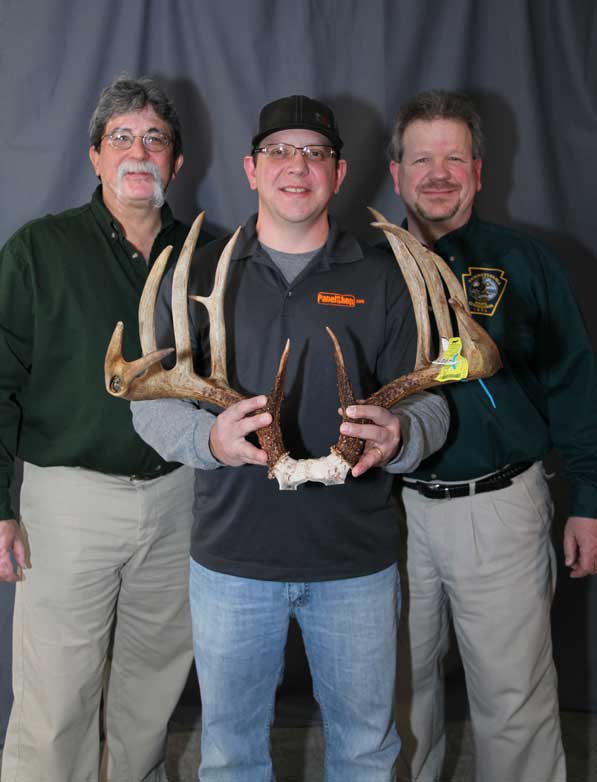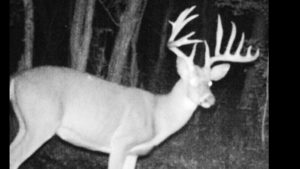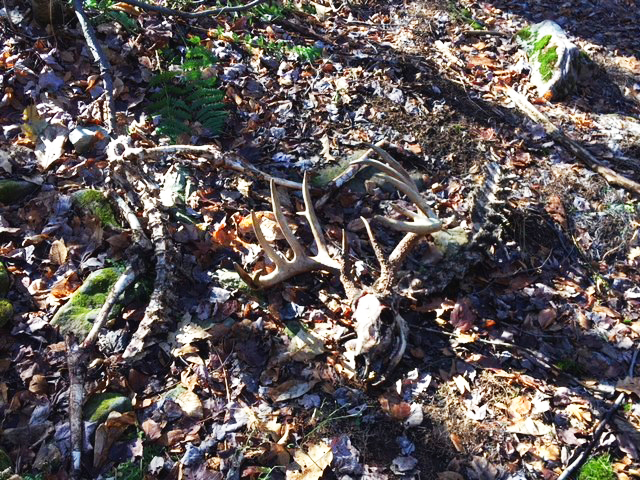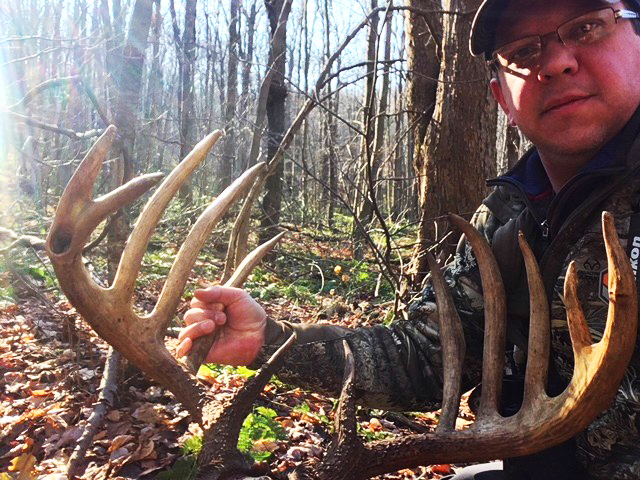
Ron Shaulis of West Newton, Penn., is not a lucky hunter. His success comes from hunting hard and putting in his time. But once in a while luck plays a role for any hunter—as it did when he missed a nice 10-point.

All through the summer of 2017 Ron’s eight trail cameras were busy recording the pictures and patterns of three good bucks in Forbes State Forest in Westmoreland County, east of Pittsburgh. Ron knew the three bucks well—a mature 10-point, a taller-tined 10-point and a huge monster. The trouble was that once hunting season started neither of the two bigger bucks were showing themselves in the daytime in front of Ron’s trail cameras, and the only buck he was seeing while hunting was the smaller 10-point.
The 10-point was a good buck by anyone’s standards, so when the buck tempted Ron with a 20-yard chip shot he decided to take it. Luckily the arrow sailed over the buck and into the dirt.
The Hunt for a Monster Buck
Of course, no one thinks a miss is lucky when it happens, but Ron’s luck became obvious later when the mature bucks started getting restless. On October 24, 2017, the huge buck finally showed himself during shooting hours – but this was only the beginning of the story.
Ron was on the phone with his wife, Elizabeth, when he spotted the big buck coming in from 50 yards away.
“He came quartering to me with his head down, and when he got behind a big beech tree I reached for my compound bow. At full draw I waited for him to step out,” Ron recalled. “At 32 yards the buck looked over his left shoulder, exposing his right shoulder and neck. That would be my only chance, so I let him have it where the shoulder meets the neck and I watched the green Lumenok disappear into him.”
Ron thought he had a good hit, but the hunt was far from over. He let some time pass before picking up the blood trail. At first the deer was leaving plenty of blood, but after following it for about 125 yards the blood was getting difficult to find, so he texted a buddy who was hunting about a mile away. After talking about the situation, Ron decided to go by the rule, “When in doubt, back out.”
The next morning Ron was in the woods bright and early. He found blood on both sides of the deer’s trail, but just a speck every 12 steps or so. An occasional big splatter of blood gave him encouragement. After about a half-mile rain started to fall hard enough to wash the blood away. “The last spot of blood was about 1,200 yards from my stand, and at that point I began tracking by hoof prints. I’d scrape bark off trees with my Buck knife so I could look back and keep a line on his direction.” Soon he lost all evidence of where the buck had gone.
A Frustrating Search
The next step was to start walking a grid pattern, and focus on each specific block before moving on to the next. In some spots ferns grew high and thick, visibility was poor and examination of the ground was tedious. He worried that the buck could be under the ferns and he’d never see it.
Despite the discouraging situation, Ron kept at it, expanding his grid search day after day, sometimes alone and sometimes with family members, but they could not find the buck. Ron knew the hit might not have been perfect, but he was sure the Rage broadhead did enough damage to kill the buck.
Even after the archery season came to a close Ron never gave up. As a technician who reads drawings every day, the deer woods gives him welcome relief from his desk job. He said, “It’s my therapy.”
Finally, on December 3, the Sunday in the middle of the two-week firearms season, Ron looked down into a bowl and saw what looked like a big scrape. Thinking it might be a good spot for an archery stand next season, he headed down the hill to check it out. That’s when he started seeing deer hair.

It was 41 days into the search when Ron Shaulis finally walked up on his buck, or what was left of it — the spine, the head and the massive antlers. His first impression upon seeing it was, “Thank God!”
Into the Books
Although it was by far the biggest buck Ron had ever seen, he wasn’t thinking in terms of a state record. It was just big. Super big. He didn’t know it was something truly special until his taxidermist told him, “You need to get that scored. It might compete for the state record for archery.”
When a hunter recovers a trophy buck so long after shooting it, and enters it into the record books, it’s not always easy to convince the record-keeping organizations that it’s indeed the buck the hunter shot, rather than a dead deer found in the woods. In Ron’s case, plenty of trail camera photos and the word of a couple of friends he let in on his quest to find the buck, plus a detailed account of the hunt and the recovery, was enough to confirm that he was indeed the hunter who arrowed the new state record for typical archery bucks. Shaulis had also alerted a DCNR officer that he was searching for the buck.
Shaulis made arrangements with Bob D’Angelo, big-game records coordinator for the Pennsylvania Game Commission and Boone and Crockett Club measurer, to score the antlers. The gross score was 193-3/8 inches; after deductions the net score was 185-4/8 inches. It surpassed the previous top archery buck by more than 7 inches (a buck taken by Michael Nicola, Sr. of Waterford, Penn. in 2004).

In addition to his dogged persistence in searching, and the good fortune of missing a smaller buck earlier in the season, Shaulis credits his kill to his aggressive trail-camera program, rigorous scent control, and the antler point restriction policy of the Pennsylvania Game Commission, which allows young bucks to grow up.
He lets his trail-camera pictures reveal travel routes, and he gradually moves his cameras closer and closer to a buck’s bedding area. While doing this, he’s always on the lookout for places where he can position a treestand. Shaulis speculated, “If it wasn’t for trail cameras, I probably wouldn’t have this deer.”
Although Shaulis shot this outstanding buck on public property, when asked where it happened and who else knows, he said, “I got him in the woods, and only two of us know where my stand is—him and me!”
